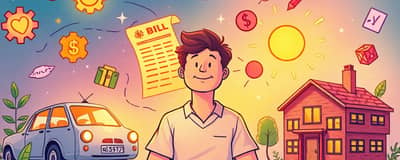Refinancing your personal loan can be a powerful financial move when timed and executed correctly. By understanding the advantages, risks, and step-by-step process, you can decide whether a new loan is the right path to lower costs or more favorable terms.
What Is Personal Loan Refinancing?
Replacing your existing loan with new terms essentially means paying off your current loan by taking out another one. Individuals pursue this option to secure lower interest costs and monthly burdens, extend or shorten repayment periods, or even access additional funds.
This financial strategy involves applying for a new loan, using its proceeds to pay off the original debt, and then making payments on the new agreement. When done properly, it can significantly improve your overall borrowing experience.
When Should You Consider Refinancing Your Personal Loan?
- Improved credit score unlocks better rates: If your credit profile has strengthened since you first borrowed, lenders may reward you with lower interest rates.
- Current market interest rates have declined compared to when you obtained your original loan.
- A longer repayment term can free up monthly cash flow, though it may increase total interest paid.
- You can afford higher monthly payments and want to shorten the loan term to save on interest.
- You wish to consolidate multiple debts into a single payment with potentially more favorable terms.
- You require a higher loan amount for an unexpected expense or investment opportunity.
Potential Benefits of Refinancing
- Savable lower interest rates for cost reduction: Even a slight rate decrease can translate into hundreds of dollars saved over the loan’s life.
- Adjustable monthly payments by extending or shortening the term to match your budget.
- Opportunity to switch from variable to fixed rates for predictable payments.
- Build positive payment history that may boost credit score over time if you make payments consistently.
Downsides and Risks
- Potential for higher overall interest costs if you extend the repayment timeline significantly.
- Origination fees, typically ranging from 1–8% of the loan amount, sometimes up to 12%, which are deducted at closing.
- Prepayment penalties on your original loan can offset any refinance savings.
- Hard credit inquiries may temporarily dip your credit score, affecting your borrowing power elsewhere.
- Application, processing, and legal fees can add to the total cost.
Example Fee Comparison
When Refinancing Might Not Make Sense
Refinancing is not always beneficial. Avoid it if your current rate is already competitive, or if origination and penalty fees outweigh your potential savings. If you’re near the end of your original loan term, most interest has been paid, leaving little to refinance.
Additionally, if your credit score has deteriorated or the best available rates only marginally improve your situation, the effort and costs involved may not be justified.
Steps to Refinance a Personal Loan
Begin by thoroughly reviewing your existing loan terms: note the interest rate, remaining balance, term length, and any penalties for early repayment. Next, check your credit report to confirm your score and identify any areas for improvement before applying.
Engage in research, application, and comparison shopping process by obtaining prequalification offers from multiple lenders. Compare the interest rates, term options, and all associated fees. Perform a break-even analysis to ensure that the long-term savings exceed upfront costs.
Once you identify the most advantageous offer, gather necessary documentation—proof of income, identification, and debt statements—and submit your formal application. Upon approval, use the new loan funds to pay off the original balance, then begin making payments to your new lender under your improved terms.
Additional Considerations
Different lenders—banks, credit unions, and online marketplaces—each have unique offerings. Consider whether a fixed or variable rate better suits your financial stability and risk tolerance. Also, understand that refinancing too frequently can lead to compounding fees and recurring credit inquiries, which could negate the benefits.
Your overall financial health should guide every decision. While refinancing can be an effective tool to lower costs, manage cash flow, or consolidate debt, it is vital to weigh both quantitative factors—like fees and interest rates—and qualitative factors—such as peace of mind and budgeting comfort.
Conclusion
Refinancing your personal loan can unlock substantial savings and greater financial flexibility when done thoughtfully. By assessing your credit profile, monitoring market rates, and carefully calculating all associated costs, you ensure that a new loan truly benefits you.
Embrace this process as an opportunity to realign your debt obligations with your current financial goals. Whether you aim to reduce monthly payments, pay off debt faster, or consolidate multiple balances, refinancing may be the strategic step you need to regain control of your finances and build a stronger future.














